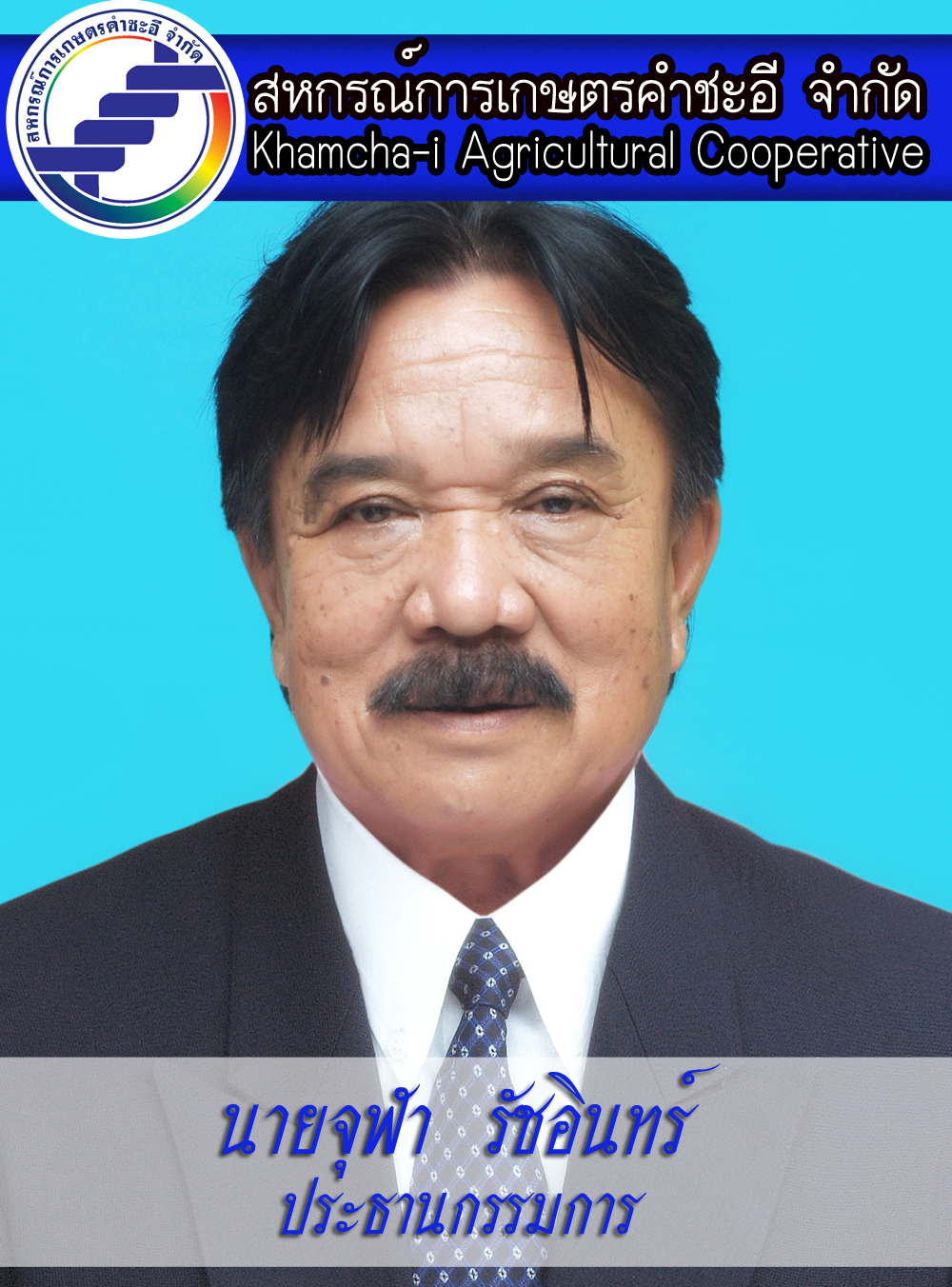×
ยินดีต้อนรับสู่ ฟอรัม Kunena!
อยากรู้จังเลยว่าคุณชอบอะไร รู้จักกับที่นี่ได้อย่างไร และสาเหตุจูงใจอะไรจึงลงทะเบียนเป็นสมาชิกกับทางเรา ช่วยแจ้งให้เราได้ทราบหน่อยได้ไหม
ยินดีต้อนรับสมาชิกใหม่ทุกท่าน และหวังว่าทางเราจะได้รับใช้คุณเยี่ยงนี้ตลอดไป
อยากรู้จังเลยว่าคุณชอบอะไร รู้จักกับที่นี่ได้อย่างไร และสาเหตุจูงใจอะไรจึงลงทะเบียนเป็นสมาชิกกับทางเรา ช่วยแจ้งให้เราได้ทราบหน่อยได้ไหม
ยินดีต้อนรับสมาชิกใหม่ทุกท่าน และหวังว่าทางเราจะได้รับใช้คุณเยี่ยงนี้ตลอดไป
kraken30
- GeorgeLayer
- Topic Author
- Visitor
-

1 week 6 days ago #2661604
by GeorgeLayer
Replied by GeorgeLayer on topic кракен вход
Tiny house with elaborate – and erotic – frescoes unearthed at Pompeii
<a href=https://kra16f.cc>кракен онион
Archaeologists have uncovered a tiny house in Pompeii that is filled with elaborate – and sometimes erotic – frescoes, further revealing the ornate way in which Romans decorated their homes.
Situated in the central district of the ancient city, the house is smaller than normal and unusually lacks the open central courtyard – known as an atrium – that is typical of Roman architecture, the Archaeological Park of Pompeii, which oversees the site, said in a statement Thursday.
kra16f.cc
kra16.cc
This change could have occurred due to shifting trends in Roman - and particularly Pompeian - society, during the first century AD, archaeologists said.
Pompeii was destroyed by the eruption of Mount Vesuvius in AD 79 when its buildings and thousands of inhabitants were buried beneath layers of ash and pumice. This coating perfectly preserved the city for millennia, making it one of the most important archaeological sites in the world as it offers an unprecedented insight into Roman daily life.
This latest discovery spotlights the ornate decorations that rich Romans enjoyed in their homes – several frescoes depict mythical scenes and others are decorated with plant and animal motifs on a white background.
One small square painting set against a blue-painted wall depicts intercourse between a satyr and a nymph, while another shows Hippolytus, son of the mythical Greek king Theseus, and his stepmother Phaedra who fell in love with him before killing herself when he rejected her in disgust.
<a href=https://kra16f.cc>кракен онион
Archaeologists have uncovered a tiny house in Pompeii that is filled with elaborate – and sometimes erotic – frescoes, further revealing the ornate way in which Romans decorated their homes.
Situated in the central district of the ancient city, the house is smaller than normal and unusually lacks the open central courtyard – known as an atrium – that is typical of Roman architecture, the Archaeological Park of Pompeii, which oversees the site, said in a statement Thursday.
kra16f.cc
kra16.cc
This change could have occurred due to shifting trends in Roman - and particularly Pompeian - society, during the first century AD, archaeologists said.
Pompeii was destroyed by the eruption of Mount Vesuvius in AD 79 when its buildings and thousands of inhabitants were buried beneath layers of ash and pumice. This coating perfectly preserved the city for millennia, making it one of the most important archaeological sites in the world as it offers an unprecedented insight into Roman daily life.
This latest discovery spotlights the ornate decorations that rich Romans enjoyed in their homes – several frescoes depict mythical scenes and others are decorated with plant and animal motifs on a white background.
One small square painting set against a blue-painted wall depicts intercourse between a satyr and a nymph, while another shows Hippolytus, son of the mythical Greek king Theseus, and his stepmother Phaedra who fell in love with him before killing herself when he rejected her in disgust.
Reply to GeorgeLayer
- PeterIonix
- Topic Author
- Visitor
-

1 week 5 days ago #2661962
by PeterIonix
Replied by PeterIonix on topic зайти на омг
Why this small city is the ‘eyeglasses capital’ of Japan
<a href=https://omgto3.com>омг ссылка
Japan is famed for its skilled artisans, masters who maintain a commitment to tradition while modernizing production techniques in line with the development of new materials and processes.
Many places in the country have grown famous by focusing on specific crafts, from exquisite kimonos to perfectly designed knives. Among them is the small city of Sabae, in Fukui prefecture, about a 3.5-hour train ride from Tokyo.
omgto3.com
площадка оmg darkmarket
It’s widely known as Japan’s eyeglasses capital – and for good reason. Sabae produces over 90% of the frames manufactured in the country, according to the local government. Signs and objects shaped like eyeglasses can be found on city streets, and there’s even a museum and festival devoted to spectacles.
The art of making spectacles
Sabae, located on Japan’s main Honshu island near the city of Fukui, has been producing quality eyewear for more than a century.
It all started in 1905, when a local government official invited skilled eyeglasses artisans to come to the city to teach their craft, an attempt to create new opportunities for local farmers.
The move paid off. Today, Sabae has over 100 companies that collaborate to make pairs of glasses.
Though these studios use cutting-edge machinery to produce new frames made of metal and acetate, most stages still require the skilled hands and trained eyes of Sabae’s master artisans.
That includes Takeshi Yamae, a frame designer with Japanese brand Boston Club who has lived in the city for 17 years. He tells CNN one pair of glasses can involve more than 200 steps.
“I first design it, sketch it, then put it into my computer,” he says. “From the time I start designing, to the time I have the perfect product, it takes more than a year.”
<a href=https://omgto3.com>омг ссылка
Japan is famed for its skilled artisans, masters who maintain a commitment to tradition while modernizing production techniques in line with the development of new materials and processes.
Many places in the country have grown famous by focusing on specific crafts, from exquisite kimonos to perfectly designed knives. Among them is the small city of Sabae, in Fukui prefecture, about a 3.5-hour train ride from Tokyo.
omgto3.com
площадка оmg darkmarket
It’s widely known as Japan’s eyeglasses capital – and for good reason. Sabae produces over 90% of the frames manufactured in the country, according to the local government. Signs and objects shaped like eyeglasses can be found on city streets, and there’s even a museum and festival devoted to spectacles.
The art of making spectacles
Sabae, located on Japan’s main Honshu island near the city of Fukui, has been producing quality eyewear for more than a century.
It all started in 1905, when a local government official invited skilled eyeglasses artisans to come to the city to teach their craft, an attempt to create new opportunities for local farmers.
The move paid off. Today, Sabae has over 100 companies that collaborate to make pairs of glasses.
Though these studios use cutting-edge machinery to produce new frames made of metal and acetate, most stages still require the skilled hands and trained eyes of Sabae’s master artisans.
That includes Takeshi Yamae, a frame designer with Japanese brand Boston Club who has lived in the city for 17 years. He tells CNN one pair of glasses can involve more than 200 steps.
“I first design it, sketch it, then put it into my computer,” he says. “From the time I start designing, to the time I have the perfect product, it takes more than a year.”
Reply to PeterIonix
- RonaldPramp
- Topic Author
- Visitor
-

1 week 5 days ago #2661963
by RonaldPramp
Replied by RonaldPramp on topic площадка оmg darkmarket
How a drab Soviet metropolis became Central Asia’s capital of cool
<a href=https://omgto3.com>омг вход
Several cities around the globe have reinvented themselves in recent years, but none more successfully than Almaty.
Since the collapse of the USSR, Kazakhstan’s largest city (population 2.2 million and growing) has evolved from a drab, run-of-the-mill Soviet metropolis into the urban star of Central Asia.
omgto3.com
ссылка на omg
Along the way, the city has developed one of the world’s most beautiful metro systems, grown into a thriving banking and finance center, complemented its vintage bazaars with luxury boutiques and modern shopping malls and reshaped its traditional gastronomy into a nouvelle cuisine that’s drawing raves from foodies around the world.
Almaty is also evolving into the cultural and artistic hub of Central Asia. It’s already got several world-class museums (including a “secret” underground collection that doesn’t even have a name) and a dazzling new cultural center slated to open early next year.
“It’s an incredibly livable city,” says long-time American resident Dennis Keen, a historic preservation advocate and founder of Walking Almaty.
“Green and clean. You don’t need a car. The public transit here is fantastic. And it’s very much the center of contemporary art and dining in Central Asia.”
Keen adds that whenever he tells someone back home that he lives in Kazakhstan, “Borat” inevitably comes up. The movie’s title character doesn’t paint a very flattering portrait of the Central Asian nation. But nowadays one is tempted to think that if Borat visited Almaty now, he would say, “Very nice!”
<a href=https://omgto3.com>омг вход
Several cities around the globe have reinvented themselves in recent years, but none more successfully than Almaty.
Since the collapse of the USSR, Kazakhstan’s largest city (population 2.2 million and growing) has evolved from a drab, run-of-the-mill Soviet metropolis into the urban star of Central Asia.
omgto3.com
ссылка на omg
Along the way, the city has developed one of the world’s most beautiful metro systems, grown into a thriving banking and finance center, complemented its vintage bazaars with luxury boutiques and modern shopping malls and reshaped its traditional gastronomy into a nouvelle cuisine that’s drawing raves from foodies around the world.
Almaty is also evolving into the cultural and artistic hub of Central Asia. It’s already got several world-class museums (including a “secret” underground collection that doesn’t even have a name) and a dazzling new cultural center slated to open early next year.
“It’s an incredibly livable city,” says long-time American resident Dennis Keen, a historic preservation advocate and founder of Walking Almaty.
“Green and clean. You don’t need a car. The public transit here is fantastic. And it’s very much the center of contemporary art and dining in Central Asia.”
Keen adds that whenever he tells someone back home that he lives in Kazakhstan, “Borat” inevitably comes up. The movie’s title character doesn’t paint a very flattering portrait of the Central Asian nation. But nowadays one is tempted to think that if Borat visited Almaty now, he would say, “Very nice!”
Reply to RonaldPramp
- ArthurMulse
- Topic Author
- Visitor
-

1 week 5 days ago #2662002
by ArthurMulse
Replied by ArthurMulse on topic omgomg
How a drab Soviet metropolis became Central Asia’s capital of cool
<a href=https://omgto3.com>омг ссылка
Several cities around the globe have reinvented themselves in recent years, but none more successfully than Almaty.
Since the collapse of the USSR, Kazakhstan’s largest city (population 2.2 million and growing) has evolved from a drab, run-of-the-mill Soviet metropolis into the urban star of Central Asia.
omgto3.com
omg официальный сайт
Along the way, the city has developed one of the world’s most beautiful metro systems, grown into a thriving banking and finance center, complemented its vintage bazaars with luxury boutiques and modern shopping malls and reshaped its traditional gastronomy into a nouvelle cuisine that’s drawing raves from foodies around the world.
Almaty is also evolving into the cultural and artistic hub of Central Asia. It’s already got several world-class museums (including a “secret” underground collection that doesn’t even have a name) and a dazzling new cultural center slated to open early next year.
“It’s an incredibly livable city,” says long-time American resident Dennis Keen, a historic preservation advocate and founder of Walking Almaty.
“Green and clean. You don’t need a car. The public transit here is fantastic. And it’s very much the center of contemporary art and dining in Central Asia.”
Keen adds that whenever he tells someone back home that he lives in Kazakhstan, “Borat” inevitably comes up. The movie’s title character doesn’t paint a very flattering portrait of the Central Asian nation. But nowadays one is tempted to think that if Borat visited Almaty now, he would say, “Very nice!”
<a href=https://omgto3.com>омг ссылка
Several cities around the globe have reinvented themselves in recent years, but none more successfully than Almaty.
Since the collapse of the USSR, Kazakhstan’s largest city (population 2.2 million and growing) has evolved from a drab, run-of-the-mill Soviet metropolis into the urban star of Central Asia.
omgto3.com
omg официальный сайт
Along the way, the city has developed one of the world’s most beautiful metro systems, grown into a thriving banking and finance center, complemented its vintage bazaars with luxury boutiques and modern shopping malls and reshaped its traditional gastronomy into a nouvelle cuisine that’s drawing raves from foodies around the world.
Almaty is also evolving into the cultural and artistic hub of Central Asia. It’s already got several world-class museums (including a “secret” underground collection that doesn’t even have a name) and a dazzling new cultural center slated to open early next year.
“It’s an incredibly livable city,” says long-time American resident Dennis Keen, a historic preservation advocate and founder of Walking Almaty.
“Green and clean. You don’t need a car. The public transit here is fantastic. And it’s very much the center of contemporary art and dining in Central Asia.”
Keen adds that whenever he tells someone back home that he lives in Kazakhstan, “Borat” inevitably comes up. The movie’s title character doesn’t paint a very flattering portrait of the Central Asian nation. But nowadays one is tempted to think that if Borat visited Almaty now, he would say, “Very nice!”
Reply to ArthurMulse
- DouglasUNITO
- Topic Author
- Visitor
-

1 week 5 days ago #2662003
by DouglasUNITO
Replied by DouglasUNITO on topic omg зеркало
Why this small city is the ‘eyeglasses capital’ of Japan
<a href=https://omgto3.com>omg ссылка на сайт
Japan is famed for its skilled artisans, masters who maintain a commitment to tradition while modernizing production techniques in line with the development of new materials and processes.
Many places in the country have grown famous by focusing on specific crafts, from exquisite kimonos to perfectly designed knives. Among them is the small city of Sabae, in Fukui prefecture, about a 3.5-hour train ride from Tokyo.
omgto3.com
omg зайти
It’s widely known as Japan’s eyeglasses capital – and for good reason. Sabae produces over 90% of the frames manufactured in the country, according to the local government. Signs and objects shaped like eyeglasses can be found on city streets, and there’s even a museum and festival devoted to spectacles.
The art of making spectacles
Sabae, located on Japan’s main Honshu island near the city of Fukui, has been producing quality eyewear for more than a century.
It all started in 1905, when a local government official invited skilled eyeglasses artisans to come to the city to teach their craft, an attempt to create new opportunities for local farmers.
The move paid off. Today, Sabae has over 100 companies that collaborate to make pairs of glasses.
Though these studios use cutting-edge machinery to produce new frames made of metal and acetate, most stages still require the skilled hands and trained eyes of Sabae’s master artisans.
That includes Takeshi Yamae, a frame designer with Japanese brand Boston Club who has lived in the city for 17 years. He tells CNN one pair of glasses can involve more than 200 steps.
“I first design it, sketch it, then put it into my computer,” he says. “From the time I start designing, to the time I have the perfect product, it takes more than a year.”
<a href=https://omgto3.com>omg ссылка на сайт
Japan is famed for its skilled artisans, masters who maintain a commitment to tradition while modernizing production techniques in line with the development of new materials and processes.
Many places in the country have grown famous by focusing on specific crafts, from exquisite kimonos to perfectly designed knives. Among them is the small city of Sabae, in Fukui prefecture, about a 3.5-hour train ride from Tokyo.
omgto3.com
omg зайти
It’s widely known as Japan’s eyeglasses capital – and for good reason. Sabae produces over 90% of the frames manufactured in the country, according to the local government. Signs and objects shaped like eyeglasses can be found on city streets, and there’s even a museum and festival devoted to spectacles.
The art of making spectacles
Sabae, located on Japan’s main Honshu island near the city of Fukui, has been producing quality eyewear for more than a century.
It all started in 1905, when a local government official invited skilled eyeglasses artisans to come to the city to teach their craft, an attempt to create new opportunities for local farmers.
The move paid off. Today, Sabae has over 100 companies that collaborate to make pairs of glasses.
Though these studios use cutting-edge machinery to produce new frames made of metal and acetate, most stages still require the skilled hands and trained eyes of Sabae’s master artisans.
That includes Takeshi Yamae, a frame designer with Japanese brand Boston Club who has lived in the city for 17 years. He tells CNN one pair of glasses can involve more than 200 steps.
“I first design it, sketch it, then put it into my computer,” he says. “From the time I start designing, to the time I have the perfect product, it takes more than a year.”
Reply to DouglasUNITO
- MichaelzoofS
- Topic Author
- Visitor
-

1 week 5 days ago #2662077
by MichaelzoofS
Replied by MichaelzoofS on topic площадка оmg darkmarket
Why this small city is the ‘eyeglasses capital’ of Japan
<a href=https://omgto3.com>omg зайти
Japan is famed for its skilled artisans, masters who maintain a commitment to tradition while modernizing production techniques in line with the development of new materials and processes.
Many places in the country have grown famous by focusing on specific crafts, from exquisite kimonos to perfectly designed knives. Among them is the small city of Sabae, in Fukui prefecture, about a 3.5-hour train ride from Tokyo.
omgto3.com
omg онион
It’s widely known as Japan’s eyeglasses capital – and for good reason. Sabae produces over 90% of the frames manufactured in the country, according to the local government. Signs and objects shaped like eyeglasses can be found on city streets, and there’s even a museum and festival devoted to spectacles.
The art of making spectacles
Sabae, located on Japan’s main Honshu island near the city of Fukui, has been producing quality eyewear for more than a century.
It all started in 1905, when a local government official invited skilled eyeglasses artisans to come to the city to teach their craft, an attempt to create new opportunities for local farmers.
The move paid off. Today, Sabae has over 100 companies that collaborate to make pairs of glasses.
Though these studios use cutting-edge machinery to produce new frames made of metal and acetate, most stages still require the skilled hands and trained eyes of Sabae’s master artisans.
That includes Takeshi Yamae, a frame designer with Japanese brand Boston Club who has lived in the city for 17 years. He tells CNN one pair of glasses can involve more than 200 steps.
“I first design it, sketch it, then put it into my computer,” he says. “From the time I start designing, to the time I have the perfect product, it takes more than a year.”
<a href=https://omgto3.com>omg зайти
Japan is famed for its skilled artisans, masters who maintain a commitment to tradition while modernizing production techniques in line with the development of new materials and processes.
Many places in the country have grown famous by focusing on specific crafts, from exquisite kimonos to perfectly designed knives. Among them is the small city of Sabae, in Fukui prefecture, about a 3.5-hour train ride from Tokyo.
omgto3.com
omg онион
It’s widely known as Japan’s eyeglasses capital – and for good reason. Sabae produces over 90% of the frames manufactured in the country, according to the local government. Signs and objects shaped like eyeglasses can be found on city streets, and there’s even a museum and festival devoted to spectacles.
The art of making spectacles
Sabae, located on Japan’s main Honshu island near the city of Fukui, has been producing quality eyewear for more than a century.
It all started in 1905, when a local government official invited skilled eyeglasses artisans to come to the city to teach their craft, an attempt to create new opportunities for local farmers.
The move paid off. Today, Sabae has over 100 companies that collaborate to make pairs of glasses.
Though these studios use cutting-edge machinery to produce new frames made of metal and acetate, most stages still require the skilled hands and trained eyes of Sabae’s master artisans.
That includes Takeshi Yamae, a frame designer with Japanese brand Boston Club who has lived in the city for 17 years. He tells CNN one pair of glasses can involve more than 200 steps.
“I first design it, sketch it, then put it into my computer,” he says. “From the time I start designing, to the time I have the perfect product, it takes more than a year.”
Reply to MichaelzoofS
Time to create page: 4.103 seconds












